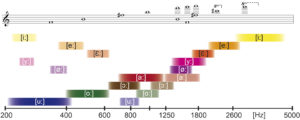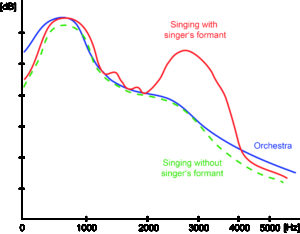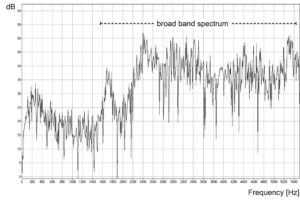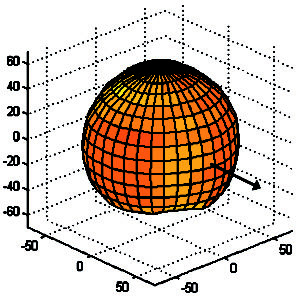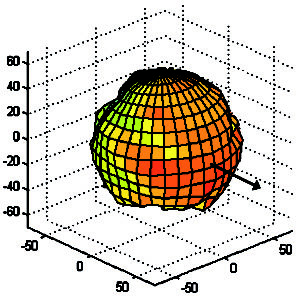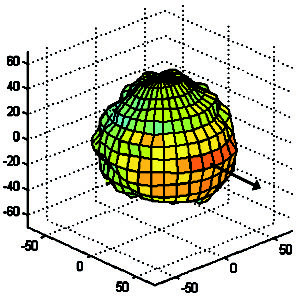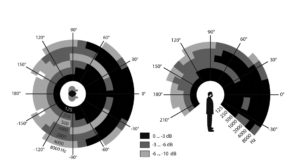Por Profesor Harald Jers
Introducción
Muchos directores de coro coinciden plenamente en que la calidad de un coro a menudo depende de la calidad de su director. Es evidente que, por este motivo, los directores tienen que mostrar diversidad y versatilidad en un gran número de áreas; además, el éxito de su trabajo aumenta cada vez que se tienen en cuenta los aspectos corales más importantes. Se podría nombrar una larga lista de habilidades necesarias. Un aspecto que no se suele tener en cuenta es la acústica. La música se basa irrefutablemente en las leyes de la física. Por lo tanto, los conocimientos sobre las leyes naturales acústicas pueden ayudar al director de coro a comprender distintos contextos y extraer de ellos valiosas consecuencias musicales. En la mayoría de los casos, si no se tienen estos conocimientos de base, la solución a los problemas se basaría en la experiencia personal o en la intuición. Este artículo intenta ejemplificar de manera clara cómo los músicos pueden aprovechar los conocimientos sobre acústica de forma sistemática.
Física objetiva y evaluación subjetiva
Los cantantes y profesores de canto dan por sobrentendidos muchos términos como “frecuencia”, “armónico” y “resonancia”. Proceden originariamente del repertorio de términos de la física y otorgan un carácter fundado a la práctica del canto, que de lo contrario, sería más bien intuitiva. Sin embargo, si uno se guía a modo de ejemplo por los debates sobre la valoración de la entonación del canto y su evaluación estética, se tienen a menudo distintos puntos de vista, e incluso también discusiones. Todo ello se debe frecuentemente al distinto uso de los términos acústicos, además de a la falta de criterios de valoración objetivos. En la acústica, como parte de la física, los términos están definidos claramente y, por lo tanto, pueden suponer una ayuda para los músicos. Además, los métodos de análisis acústico ofrecen la posibilidad de desarrollar criterios objetivos que constituyen un complemento óptimo y necesario para la experiencia de canto y habilidades pedagógicas. Después de varios siglos de estudio de la acústica de la voz, en los últimos años ha sido posible una investigación de la acústica coral más profunda mediante el desarrollo técnico de sistemas de medida y programas de análisis, así como de amplio conocimiento técnico necesario en canto, dirección de coro, psicoacústica, física, procesamiento de señales, metrología y acústica arquitectónica.
Consideración acústica del canto
Se puede ilustrar la acústica de producción del canto muy simplemente de la siguiente manera: los pulmones facilitan la energía para que en la laringe se produzca la fuente de sonido elemental. El tracto vocal, situado justo encima, actúa como filtro y forma, según la posición del mismo, los sonidos naturales con distintos volúmenes. En los labios existe todavía otro filtro en lo que se refiere a la emisión de resonancia, que de nuevo modifica el sonido. Mediante las cualidades acústicas de la expansión de la resonancia, así como de la acústica arquitectónica, en cada lugar el sonido llegará más o menos modificado. La última variación tiene lugar en el oído y la transmisión neuronal al cerebro como sonido percibido por el oyente. Los distintos aspectos de esta larga cadena de sucesos y cambios del sonido se deberían poner a contraluz en este artículo y sobreponerse en la relación práctica coral.
Producción del sonido
Desde el punto de vista acústico, el tono generado por un instrumento o por la voz se compone de un gran número de parciales armónicos, o simplemente armónicos, con distintos volúmenes. La frecuencia del tono fundamental, que es idéntica a la de los intervalos del armónico, determina la altura del tono percibido. La proporción de los volúmenes de los armónicos por separado, también llamada espectro, repercute en la percepción de los distintos timbres. Por ello, cuando escuchamos los mismos tonos fundamentales podemos diferenciar que los emiten distintos instrumentos, es decir, que son distintos timbres.
Sonido vocal
La voz hablada y cantada se compone, tanto fonética como acústicamente, de vocales y consonantes principalmente. En la gráfica adjunta se presenta un análisis espectral de una vocal que aclara cómo se presenta la distribución de las frecuencias en este sonido.
Vocal “a” en un tono: tono fundamental con armónicos en el que se aprecia mucha energía en el rango de frecuencias graves. |
Las vocales son las principales portadoras del sonido y son responsables de un sonido vocal bonito y de la intensidad. El análisis espectral muestra el tono fundamental con numerosos armónicos. La potencia del sonido vocal, y por tanto de la voz, se encuentran en el rango de frecuencias más grave.
Formantes vocales
Aquellos rangos de frecuencias en los que los sonidos naturales muestran volúmenes especialmente fuertes se denominan formantes. Para cada vocal existe una serie de formantes característicos que son necesarios para la percepción de ese timbre y se llaman formantes vocales. Existen distintos formantes numerados de la frecuencia más grave a la más aguda. Los primeros dos formantes son decisivos y suficientes para la percepción acústica de una vocal y su comprensibilidad. El resto de formantes más agudos caracterizan más bien el timbre y la forma particular de articular del hablante o cantante. Los formantes vocales varían incluso de una persona a otra, y también entre mujeres, hombres y niños, mejor dicho, entre distintos timbres. Para algunas vocales, las combinaciones de ambos formantes vocales son específicas y se representan en el siguiente diagrama a partir de los formantes proporcionados:
Formantes vocales (1 y 2) en el canto (los más importantes están representados con colores más opacos) |
Cuando se canta, se amplifican aquellos armónicos que se encuentran en el ámbito de los correspondientes formantes vocales. Por lo tanto, en el coro la educación vocal determina de forma decisiva la entonación dentro de la voz grupal, es decir, lograr que los formantes vocales sean tan similares como sea posible. Cuando se cantan intervalos o acordes en coro, los armónicos y formantes vocales idénticos son decisivos para una buena entonación.
Aspectos de la fonación
Cada cambio anatómico de la posición de la lengua, el velo del paladar, la laringe, la apertura de la boca y la mandíbula inferior conlleva variaciones del tracto vocal. Dichas variaciones se producen ante incidentes fonéticos y, a la hora de hablar, suceden muy rápidamente. Algunos de los aspectos relevantes en la fonación, como la posición de la voz, la resistencia, el volumen, el ajuste vocal, el refuerzo del sonido y los armónicos de la voz pueden manifestarse mediante estos enfoques acústicos y utilizarse detalladamente.
Ajuste vocal
A modo de ejemplo, en la fonación se aspira mediante los denominados ajustes vocales a fusionar las vocales más fuertes y aportar a la voz un color básico uniforme, independientemente del timbre vocal. Desde el punto de vista acústico, el primer formante vocal depende mucho de la posición de la mandíbula y el segundo de la posición de la lengua principalmente. El ajuste vocal se realiza por medio de variaciones de la posición de la mandíbula y la lengua, ya sea al mismo tiempo o independientemente una de otra. Por lo tanto, se presentan también distintos enfoques de la fonación que se basan en cambios en la posición de la mandíbula y/o la lengua y tienen como objetivo un balance de inteligibilidad vocal y uniformidad de la voz. Ya que este control separado requiere mucha práctica, es un largo proceso de aprendizaje del que se habla a menudo en clases de canto o en fonación vocal.
Formante del canto
La fuerza de la voz del cantante no solo es interesante desde el punto de vista del solista sino también cuando se canta en coro. En este contexto, el rango de frecuencias entre 2 000 y 4 000 Hz adquiere especial importancia. Este rango, también llamado “formante del canto”, designa el claro aumento del volumen de los armónicos en esta frecuencia. En relación directa con el formante del canto se encuentra el término de “posición vocal”, que se trata de un importante objetivo en el ámbito de la fonación, puesto que mediante una mejora de la posición vocal se logra un refuerzo de los armónicos similar al aumento del formante del canto.
Espectro de un tono cantado (la bemol, frecuencia del tono fundamental de 200 Hz) sobre la vocal “a” Sin haber recibido clases de fonación/canto |
Espectro de un tono cantado (la bemol, frecuencia del tono fundamental de 200 Hz) sobre la vocal “a” con haber recibido clases de fonación/canto |
En las gráficas adjuntas se puede ver claramente el aumento de los armónicos 10-15 en un tono cantado con formante del canto en comparación a sin formante del canto. El aprendizaje del formante del canto y la posición vocal asociada también pueden tener importancia si se aplican a la música coral. La posición de la voz puede aportar gran brillantez, comprensibilidad del texto y audibilidad. Por otra parte, permite un rango dinámico más alto en comparación con el esfuerzo relativamente bajo del cantante, lo que hace que el canto sea sonoro y natural.
En el siguiente gráfico se presentan los espectros promedio de una orquesta y de un cantante. Se puede ver sobre un gran rango de frecuencias que la voz es menos fuerte que la orquesta. Solo en el rango de frecuencias desde aproximadamente los 2 000 hasta cerca de los 3 200 Hz los armónicos son más fuertes que la orquesta. Por ello, un cantante es difícil de escuchar entre tantos instrumentos por lo general, especialmente en este rango de frecuencias en el que el oído limita los armónicos para percibir la altura del tono fundamental. Como los intervalos entre los armónicos son equidistantes y equivalen a la frecuencia del tono fundamental, el oído puede clasificar la altura del tono inequívocamente. En el canto coral a menudo se da la situación en la que el cantante que ha recibido clases de canto ya es capaz de cantar con formante del canto. De este modo, se le podrá escuchar por encima de la media del coro. Junto al objetivo generalizado de los directores de coro de “limitar” a los cantantes con mejor formación para así obligarles a cantar con menos formantes del canto, existe además otra estrategia más eficaz pero algo más costosa, que consiste en que el resto de cantantes se inicien en el canto con formantes del canto. La ventaja de este método es un rango notablemente más dinámico del coro y un sonido conjunto más claro, flexible y fresco.
Consonante sorda “sch”: la energía predomina en el rango de frecuencias más alto. |
Al contrario que con las vocales y sus sonidos de unión, las consonantes sordas se forman sin la participación de las cuerdas vocales y generadas principalmente mediante la fricción y refracción de corrientes de aire por las vías de articulación. Mediante esta producción de sonido átona, también no periódica, poseen una de todas las frecuencias del amplio espectro, que por lo general presenta una energía principal en el rango de frecuencias más alto de hasta cerca de 12 000 Hz.
Consonante sorda “sch”: la energía predomina en el rango de frecuencias más alto. |
En las consonantes y timbres sonoros existen formas mixtas de formas de onda periódicas y no periódicas en las que se superponen las mismas proporciones. En una melodía cantada, junto con el desarrollo del tono fundamental y los cambios armónicos correspondientes, también según el texto, aparecen muchos y variados cambios del espectro que con el tiempo reproducen el desarrollo espectral. Por lo tanto, las consonantes dividen y estructuran los tonos vocales de forma lógica.
Mediante la amplia sugerencia de frecuencia en el oído y la alta energía, las consonantes se perciben por lo general muy fuertemente. Esto explica también el fenómeno que tiene lugar en la práctica coral por el que consonantes que no suenan exactamente igual se perciben claramente y también se considera que molestan. Un refuerzo de las consonantes seguramente aclararía este problema a los coristas aficionados, pero llevaría a un desequilibrado balance de volumen con las vocales. Puesto que la energía de las consonantes ya es, de por sí, bastante alta, basta una articulación normal de las consonantes que suenan simultáneamente, lo que se puede conseguir a través de la sensibilización de los cantantes del coro, además de la respectiva precisión por parte del director.
La radiación de sonido de los cantantes
Junto con la calidad y el sonido de la voz de canto, la radiación de sonido de los cantantes de coro es importante para los oyentes en la sala de ensayos o de concierto. El motivo principal es la forma en la que el cantante emite el sonido y en qué direcciones se expande la radiación y con qué intensidad. El llamado “diagrama de radiación” señala una característica del cantante que solo depende de la geometría corporal y las propiedades de absorción y reflexión acústicas del cuerpo. A través de los labios, nariz, orejas, cabeza, hombros y todo el tronco superior el sonido se flexiona, refleja o absorbe de forma distinta para cada frecuencia. Cada frecuencia de un tono cantado, es decir, cada correspondiente tono fundamental y sus sendos armónicos, tiene como resultado una radiación distinta, como se puede ver en algunos gráficos mencionados a continuación a modo de ejemplo. Los gráficos retratados muestran diagramas de esferas que describen el comportamiento del sonido alrededor del cantante. Se trata de una representación de la presión sonora en decibelios (dB), una magnitud física que corresponde a la sonoridad aproximada que percibe el oyente. La intensidad de la radiación se representa tanto por la discrepancia de las esferas como por las distintas tonalidades: el rojo significa una fuerte radiación, el azul una radiación limitada. La dirección en la que mira el cantante se indica mediante una flecha. A modo de ejemplo, aquí está representada la radiación de tres armónicos de los espectros mencionados anteriormente.
Tono fundamental (200 Hz)
Décimo armónico (2 400 Hz)
Decimoquinto armónico (3 400 Hz)
Una representación óptica de esta radiación se indica mediante las dos gráficas siguientes sobre la característica de la radiación en dos niveles, proyección horizontal y vista lateral. Los datos de frecuencias describen la frecuencia media de los respectivos valores dentro de una octava. Las áreas muestran las principales zonas de radiación de la voz de canto: las áreas en gris oscuro muestran una disminución en comparación con el nivel más alto de 0 a -3 dB, las zonas grises de -3 a -6 y las gris claro de -6 a -10 dB. Las zonas sin marcar tienen un descenso del nivel mayor de -10 dB.La radiación aquí representada para tres armónicos también se manifiesta en los otros armónicos del espectro de canto y repercute, según la intensidad del armónico, en todo el sonido. Especialmente en el campo de los formantes del canto reforzados entre 2 000 y 3 600 Hz se registran claras direccionalidades. Cuando más orientada hacia el frente es la direccionalidad, más sonoro y sólido percibe el oyente el tono. Esto pone de relieve, una vez más, la considerable importancia del formante del canto.
Zonas de radiación principales de cantantes (promedio en octavas) |
Consecuencias para la práctica coral y del canto
La radiación del cantante se puede resumir como sigue: en frecuencias graves de 80-500 Hz, la radiación es casi esférica. Para estas frecuencias es también importante el control del cantante. En frecuencias medias de entre 500-2 000 Hz la emisión principal está orientada fundamentalmente hacia delante; en frecuencias algo más altas, la radiación es más fuerte hacia arriba a la derecha, y hacia la izquierda y atrás para la radiación reducida. Sin embargo, en la parte posterior del cantante existe un máximo local debido a la interferencia constructiva. En frecuencias altas de 2 000-5 000 Hz se emite, además de la fuerte radiación hacia delante, una gran parte de la energía hacia la derecha y la izquierda; la radiación disminuye en gran medida hacia atrás.
Para lograr un gran volumen de sonido para un solista o cantante de coro, la situación en la sala de conciertos y con respecto a la orquesta tiene una importancia especial. Para que la energía orientada a los lados, hacia arriba y hacia atrás no se pierda, las paredes reflectantes bien dispuestas son de vital importancia. En una situación de concierto en la práctica coral, los investigadores han descubierto también consecuencias:
- Los armónicos en vocales poseen cada uno distintas propiedades de emisión, mediante las que el sonido en distintas direcciones se percibe como distintos timbres.
- La posición del cantante puede utilizarse incluso como medio artístico para poner en práctica las ideas tonales del director del coro.
- Debe tenerse especialmente en cuenta la posición de los cantantes vecinos, que pueden modificar en gran medida el timbre sonoro.
- Las consonantes tienen, debido a su alta frecuencia, una sólida direccionalidad; sin embargo, pueden atenuarse en gran medida a través de grandes distancias u obstáculos.
- Las paredes reflectantes deben situarse a una altura suficiente detrás del coro, y además la energía relativamente alta de la radiación hacia atrás debe utilizarse y reflectarse hacia delante.
- Una distancia mayor entre los cantantes sirve para un mayor despliegue de sonido en vez de una absorción por parte de los cantantes contiguos.
- También debería haber suficiente espacio entre las filas del coro.
- El escenario también debería estar situado lo suficientemente alto para que el sonido ligeramente orientado hacia abajo no desaparezca en la ropa de las filas anteriores.
Expansión del sonido
El canto de un cantante del coro, es decir, la forma de onda descrita anteriormente, se extiende en forma de ola esférica. Por lo tanto, está sujeta a las leyes de ondas mecánicas. Cuando golpea contra un obstáculo, se pueden mencionar brevemente los tres fenómenos más importantes que tienen lugar:
- Reflexión: Las ondas sonoras se reflejan cuando chocan contra grandes obstáculos, el ángulo de reflexión corresponde al ángulo de incidencia.
- Absorción: Al encontrarse con un obstáculo, la absorción hace que la energía de la onda de sonido disminuya. Esta reducción de energía es muy diferente según las distintas frecuencias y depende de las propiedades acústicas del obstáculo.
- Difracción: Las ondas sonoras pueden experimentar también una desviación de la dirección de propagación debido al choque contra un obstáculo. Este particular fenómeno igualmente depende en gran medida de la frecuencia y repercute en distinto grado según la proporción de la longitud de onda y el tamaño del obstáculo.
Acústica arquitectónica
Basándonos en las leyes de propagación del sonido, en las salas de concierto, iglesias y otras salas de música especiales, la acústica se manifiesta de una determinada manera. Este resultado acústico depende de la situación de la fuente de sonido (por ejemplo, el coro) y el receptor del sonido (por ejemplo, el público). El esquema de esta acústica arquitectónica se explicará brevemente mediante las siguientes imágenes: el sonido de un cantante de coro se transmite en primer lugar a través del aire directamente a un oyente del público. Se producen más ondas sonoras ligeramente difuminadas por una reflexión contra el techo, la pared o el suelo. Estas son las primeras reflexiones. Dado que el sonido se puede reflejar varias veces, el sonido del cantante de coro llega al oyente también notablemente difuminado; el conjunto de estos sucesos de sonido se conoce como reverberación. Según lo rápido que se pierda la energía del sonido en la habitación, mayor es la longitud de la reverberación.
Propagación del sonido y distribución de la energía en el espacio |
La acústica de una sala se rige principalmente por cuatro aspectos: el tamaño de la habitación, su forma, las propiedades acústicas de las superficies y la situación de las fuentes de sonido:
- Tamaño de la habitación: Las habitaciones grandes tienen mucho tiempo de reverberación, que se minimiza mediante las superficies absorbentes. Debido a las grandes distancias, la energía del sonido y la sonoridad percibida por el oyente disminuyen significativamente. Además, debido a la relativamente lenta velocidad del sonido (el sonido viaja a aproximadamente 34 m por cada 1/10 de segundo) se pueden dar varios tiempos de escucha entre el sonido original y las distintas reflexiones. Esto conlleva distorsiones y molestas superposiciones. Incluso en los espacios más pequeños la inteligibilidad se puede ver notablemente afectada por reflexiones inoportunas.
- Forma: Las formas de habitación más propicias son aquellas en las que el sonido llega al oyente directamente, sin reflexiones que lo refuercen o debiliten. Esto ayuda al oyente a asociar cuál es la fuente de sonido. En muchas iglesias a menudo hay numerosas superficies redondas en las que el sonido se refleja de todos los lados hacia el centro, por ejemplo, en el coro de la iglesia, bóvedas o una capilla. Se producen así a menudo incómodas interferencias o retrasos que molestan al oyente.
- Propiedades acústicas de la superficie: Las superficies duras y lisas reflejan muy bien el sonido, por lo que la energía de una onda sonora tarda mucho en degradarse, lo que causa tiempos de reverberación largos y que las iglesias sean consideradas a menudo ruidosas. Las superficies porosas y a menudo llamadas poco reflectantes, como por ejemplo la tela, absorben el sonido. La acústica de una habitación está determinada principalmente por el tipo y distribución de estas superficies. La presencia de personas afecta a la acústica de la habitación también por absorción. Las salas pueden verse significativamente alteradas si se cambian estas superficies. Los materiales suaves y porosos, como por ejemplo bancos tapizados, hacen que una iglesia ruidosa sea tranquila.
- Situación de las fuentes de sonido: Las fuentes de sonido se refuerzan cuando están situadas directamente enfrente de una superficie reflectante. Cuanto más lejos esté la fuente de sonido de la pared, más débil se volverá por la reflexión y mayor será la diferencia de reproducción de la reflexión frente al sonido directo. Por lo tanto, el volumen, la presencia y la transparencia de la música pueden variar por la posición de las fuentes de sonido y las paredes.
Coro y sala
Otro aspecto importante es la relación entre el coro y la sala. Es necesario distinguir la audibilidad de los cantantes del coro en el escenario de la percepción que tiene el oyente del sonido en el público; ambas dependen de la acústica de la sala. Vienen determinadas como sistema acústico por las propiedades geométricas y acústicas de las paredes, el techo, el suelo o los obstáculos más grandes de la sala de ensayo o concierto. El diagrama de radiación descrito anteriormente de los cantantes y las distintas posiciones del coro en el escenario tienen por lo tanto un gran impacto no solo en la audibilidad de los cantantes entre sí, sino también en cómo los oyentes perciben el sonido. Cada cantante es una fuente de sonido cuyo sonido se puede reflejar en el sistema acústico o también difractarse contra los objetos. Este comportamiento es altamente dependiente de la frecuencia y determina la distribución de energía en la habitación. En términos generales, se diferencia el área alrededor del cantante del área que está a mayor distancia según cómo de alto sea el sonido directo del cantante, es decir la fracción que se transmite directamente al público.
En una sala con mucha reverberación y muchas reflexiones en las zonas donde se juntan las paredes, el campo cercano alrededor de cada cantante es bastante pequeño, es decir, los cantantes ya están levemente distanciados de sus compañeros de canto en el campo lejano. Esto significa que el cantante, independientemente de su posición en el escenario, tendrá una sensación auditiva similar del coro al completo y la colocación tendrá menos influencia en la audibilidad. Del mismo modo, los cambios en la formación del coro serán inapreciables para la audiencia. Seguro que cada coro ha tenido al menos una vez la sensación de que en una iglesia “desprotegida” es mucho más complicado localizar la voz de otro cantante entre las distintas voces. En una sala “seca” con menos reverberación, el campo cercano es notablemente mayor y la colocación y la formación en el coro, es decir, la distancia de los cantantes entre sí, pueden influir en la audibilidad de los cantantes. El hecho de que los cantantes se escuchen mejor entre ellos también provoca un mejor resultado final para el oyente.
Disposición del coro: Formación – Colocación – Distancia
En la colocación del coro se pueden diferenciar fundamentalmente tres aspectos distintos:
- Con la colocación nos referimos normalmente a la disposición de los cantantes dentro de una misma voz. Existen distintos enfoques y filosofías. Algunos directores de coro recomiendan que los cantantes con un timbre y volumen similar estén situados, a ser posible, uno junto a otro. Otros directores tratan de evitar este posicionamiento y alternan distintos sonidos y timbres, para que se genere un efecto de ajuste y el conjunto de las voces se alinee un poco. Aquí debemos tener en cuenta que normalmente es muy difícil que las voces con el mismo timbre puedan percibir las otras voces. Si no prestamos atención, esto puede tener consecuencias poco favorables para la entonación o el balance del volumen. Los criterios sociales e interpersonales son, sin duda, una razón importante más para la formación del coro, que ahora abordaremos con mayor detalle.
- La formación se refiere a la colocación de las distintas voces. En este sentido, muchos países tienen tradiciones que sin duda han surgido, en gran parte, de la literatura sobre canto. Además, intervienen aspectos prácticos, como el tamaño de los cantantes y, en relación con esto, el poder ver bien al director. El espacio que ocupa cada voz también hace que nos decantemos por una formación u otra. La tabla que está a continuación refleja tres formaciones bastante habituales y sus ventajas y desventajas.
- A menudo se pasa por alto la distancia entre los cantantes del coro. En primer lugar, la distancia repercute en el volumen de un cantante en relación con el resto del coro. Algunos balances de volumen son favorables para el coro y otros no; depende en gran medida del espacio en el que nos encontremos. Por otro lado, la distancia puede aportar un desarrollo del sonido al oyente distinto del que se quiere proyectar.
|
Formación |
Ventajas |
Desventajas |
Esquema de la formación |
|
Formación en bloque |
Sonido a menudo más fuerte que en la formación en filas. De utilidad para obras polifónicas. |
Los cantantes de los márgenes pueden tener problemas para escuchar a otros cantantes de su misma voz. Los cantantes situados en medio de una voz pueden tener problemas para distinguir la voz propia de cada cantante en su misma grupo. |
SSSAAATTTBBB Director |
|
Formación en filas |
Especialmente indicada para música homofónica, para percibir adecuadamente las entradas y el balance de cada voz. |
Algunas voces están muy alejadas de los propios cantantes. |
TTTTTTBBBBBB Director |
|
De base mixta (en cuartetos SATB) |
Promueve la confianza en uno mismo. El público percibe las voces más mezcladas y a menudo más fuerte. Los cantantes pueden percibir muy fácilmente las otras voces; muchas veces mejora la afinación. |
Se requiere de práctica previa. Los cantantes deben ser experimentados. Los cantantes pueden sentirse “solos” a veces. Es difícil para el director de coro dirigir a grupos individuales. |
SATBSATBSATB Director |
Ventajas y desventajas de las formaciones de coro habituales
La acústica de un coro en una sala es el resultado, desde el punto de vista acústico, de la producción de sonido de cada cantante, la radiación, la acústica de la sala y la posición de los coristas en la misma. Por lo tanto, se puede afirmar que, en resumen, la formación del coro y su colocación son un medio artístico para llevar a cabo un concepto sonoro que cada director de coro puede establecer deliberadamente y para lo que debe tomar una decisión. La formación de los coros ya no es un hecho dado al que el director debe adaptarse.
Audición y percepción
La música llega al oído del oyente en el público a través de una trayectoria bastante complicada a través de la sala. Según la posición, las impresiones pueden ser bastante diferentes. El oído representa un filtro adicional que será interpretado por el cerebro y que el oyente percibirá finalmente como sonido. Por otra parte, cabe mencionar que la capacidad auditiva también tiene una influencia importante sobre la percepción del sonido del coro. Con la edad disminuye la capacidad auditiva asociada a las frecuencias agudas, lo que significa que las consonantes se escucharán más débiles y posiblemente no se comprenda bien el sentido de lo que se canta, aunque las vocales todavía se escuchen fuertes.
La grabación de coros
Las anteriormente mencionadas formaciones y colocaciones son significativas de manera decisiva para un coro que esté en una sala y el oyente del público. En el caso de la grabación tanto de una actuación en directo como en un estudio, se aplican otras reglas, ya que los oídos de los oyentes en el público están situados más lejos y los micrófonos principales y, en caso de ser necesarios, secundarios están notablemente más cerca. Así se eliminan las notables influencias de las paredes laterales y sus propiedades de reflexión y se dispone un sistema acústico diferente.
Resumen
La acústica de un coro es un complejo sistema de muchos parámetros que interactúan entre ellos. Además del sonido puro producido a través de la laringe y el filtro del tracto vocal, la voz humana continúa experimentando una radiación que varía según las distintas frecuencias a través del diagrama de radiación. Por otra parte, la posición en el escenario o la posición de los propios cantantes en el coro influencia la radiación; además, la capacidad de los coristas de escucharse unos a otros se ve afectada significativamente tanto por la posición entre ellos como por el espacio que los rodea. Para que el sonido se expanda en la habitación, los parámetros de la acústica arquitectónica y sus propiedades acústicas son decisivos. La percepción del sonido por parte del oyente actúa como un filtro adicional para las leyes acústicas, además de atribuírsele un juicio subjetivo.
Harald Jers es director y profesor de dirección de coro en la Musikhochschule de Mannheim. Lleva a cabo cursos de dirección y talleres internacionales en distintos conservatorios superiores y academias de música europeas. Es también jurado de competiciones corales y de composición, así como ponente en academias de música internacionales y congresos especializados. La combinación de distintas disciplinas supone un símbolo característico de su trabajo como director, algunas de ellas basadas en sus títulos universitarios en Dirección, Conservatorio Superior en la especialidad de Canto, Música Sacra y Física. Su amplio trasfondo de conocimiento musical gracias a su investigación intensiva en el ámbito de la acústica coral y arquitectónica le sirve para lograr mejoras en la calidad de sonido del coro, para llevar a cabo una metodología de ensayos más eficaz y para optimizar la disposición de la orquesta y el coro. Con su coro de cámara CONSONO ha ganado numerosos certámenes de coros internacionales, lo que tiene su origen en su intenso trabajo en el sonido coral. Correo electrónico: harald.jers@gmx.de
Traducido del alemán por Ana Medina, España
Revisado por Carmen Torrijos, España


![The vowel “a” [as pronounced in German, similar to the vowel in English car - translator] on one pitch: fundamental with overtones and particularly pronounced energy in the region of the lower frequencies](http://icb.ifcm.net/wp-content/uploads/2016/06/graphics-vowel-fundamental-tone-partials-300x204.jpg)
